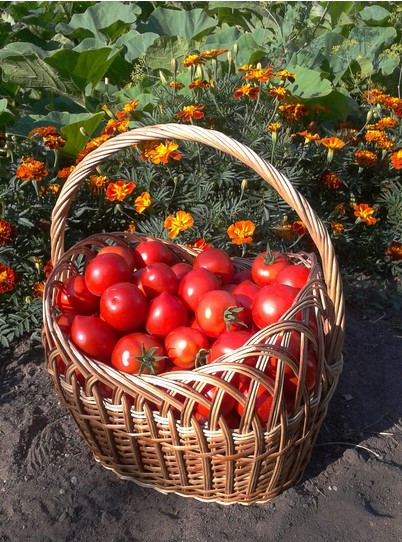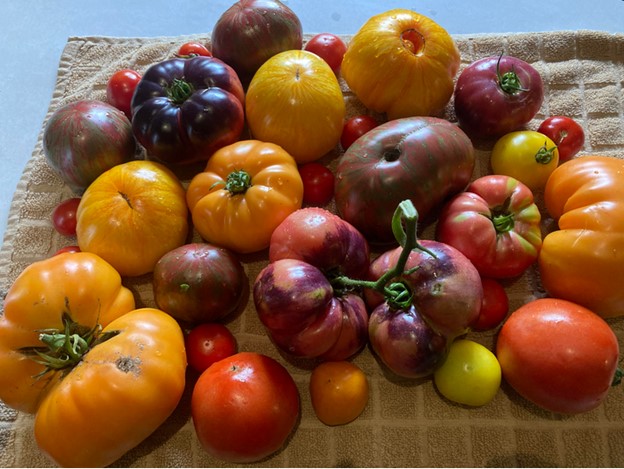Tomato’s rise to culinary fame is nothing short of extraordinary, as over the years it has carved a place of its own in the kitchen for its flavor, versatility, and nutritional value.
This once-grown wild fruit in South America, specifically in the area that is now Peru, Ecuador, and Chile, plays a central role in countless dishes across various cultures, leaving an indelible mark on global cuisine.
This juicy, pulpy fruit carries a delightful history so in the article we will discuss in detail the beginning of tomatoes that remain an iconic and indispensable ingredient in global cuisine.
So, all you tomato enthusiasts buckle up for a historical adventure of tomatoes trace its origins and journey across the continents, and get immersed in this intriguing journey.
Also, read: What Family Do Tomatoes Belong To?
Origin Of Tomatoes
Table of Contents

The journey of the humble tomato is fascinating and has now become a beloved ingredient in the kitchen of many.
Tomatoes (Solanum Lycopersicon) are one of the most widely grown crops, used in many dishes, and trace their origins to South America specifically in the Andes mountains where they were first domesticated.
Here, tomatoes were first cultivated by the ancient civilizations, and the people of this region slowly began the domestication of tomatoes, which were cultivated in larger and more edible amounts later.
Slowly, the tomato was known by a variety of names, and soon the Spanish and Italians were the first Europeans to adopt it as a food.
The Italians named it “Pomodoro,” which means golden apple.
The French named it pomme d’amour, which means love apple, as it was initially thought to have aphrodisiac properties.
Earlier these tomatoes resembled cherry tomatoes and grew in the regions of now modern-day Peru, Ecuador, and northern Chile.
But over the centuries, tomatoes traveled through the continent for centuries, slowly evolved into a culinary staple delight, and roamed around the globe.
The original wild tomatoes were tiny, cherry-sized fruits that resembled the plump, red tomatoes we know today.
The first domestication was around 700 BCE when it was called “xitomatl,” which eventually gave us the word “tomato”.
The Arrival Of Tomatoes In Europe

The history of tomatoes is a fascinating mix of cultures, and it took a dramatic turn with its arrival in Europe from America. In the 16th century, tomatoes were first introduced to Europe by the Spanish explorers and were viewed with a lot of suspicion due to their resemblance to toxic nightshade plants.
Tomato seeds were first brought from Mexico to Spain by those early explorers, and slowly they began to get incorporated into regional cuisine.
They were introduced to North America from Europe and failed to attain huge popularity until the 20th century.
Slowly, the people of Spain and Italy embraced tomatoes and incorporated them into local cuisines, and by the late 18th Century tomatoes spread to France and England and eventually made their way to the Middle East and Asia.
By that time its culinary potential had become evident, and it experienced a resurgence in its popularity after its introduction to Europe.
The 18th and 19th centuries witnessed the global spreading of tomatoes to parts of Europe, the Middle East, and Asia, and immensely gained its popularity.
Slowly and steadily, it made its place in global cuisine, became an indispensable part of food history, and earned a strong place in international cuisine.
Modern-Day Tomatoes

Tomato now enjoys a status of great importance due to its global presence. It is one of the most widely cultivated crops, and countries like China, India, the United States, Turkey, and Italy are among the top producers, thereby generating livelihoods for all.
Its culinary importance has risen to fame due to its incredible versatility in the kitchen along with its high nutritional value. Its extensive use in various cuisines around the world is worth noticing and is a staple ingredient in pasta sauce, pizza, salsa, and gazpacho.
Therefore, modern-day tomatoes hold a prominent position in agriculture and cuisine and have earned a stable reputation as a global food staple, thereby paving the way for a sustainable and flavorful future.
Modern Cultivation And Variety

Tomatoes are one of the world’s most cultivated crops, and they are grown on every continent except Antarctica. Its versatility and nutritional benefits make it a cornerstone in global cuisine.
It has achieved huge agricultural success and thrives in diverse climatic conditions except Antarctica due to its extreme cold and inhospitable conditions.
Additionally, its adaptable, resilient, and global nature made it a staple across cultures.
Each tomato variety has specific uses in the kitchen, comes in a stunning range of colors, flavors, and aesthetic charm, and is packed with all the nutritional goodness. The colors range from red to yellow, orange, green, purple, and even black, and it is a crucial source of vitamins A and C.
It has carved an important place in global cuisine and is an unimaginable ingredient for Italian and Mexican food.
Final Words
Thus, the journey of a tomato from a wild Andean plant to its current status as a global food staple is a captivating and fascinating tale of agriculture and culinary adaptation.
The turning point in Tomato’s story came with its domestication by the people of America which gradually transformed it into a more desirable crop, and this indicates the dynamic exchange of foods and ideas that has shaped our world’s cuisines.
Leave a Reply